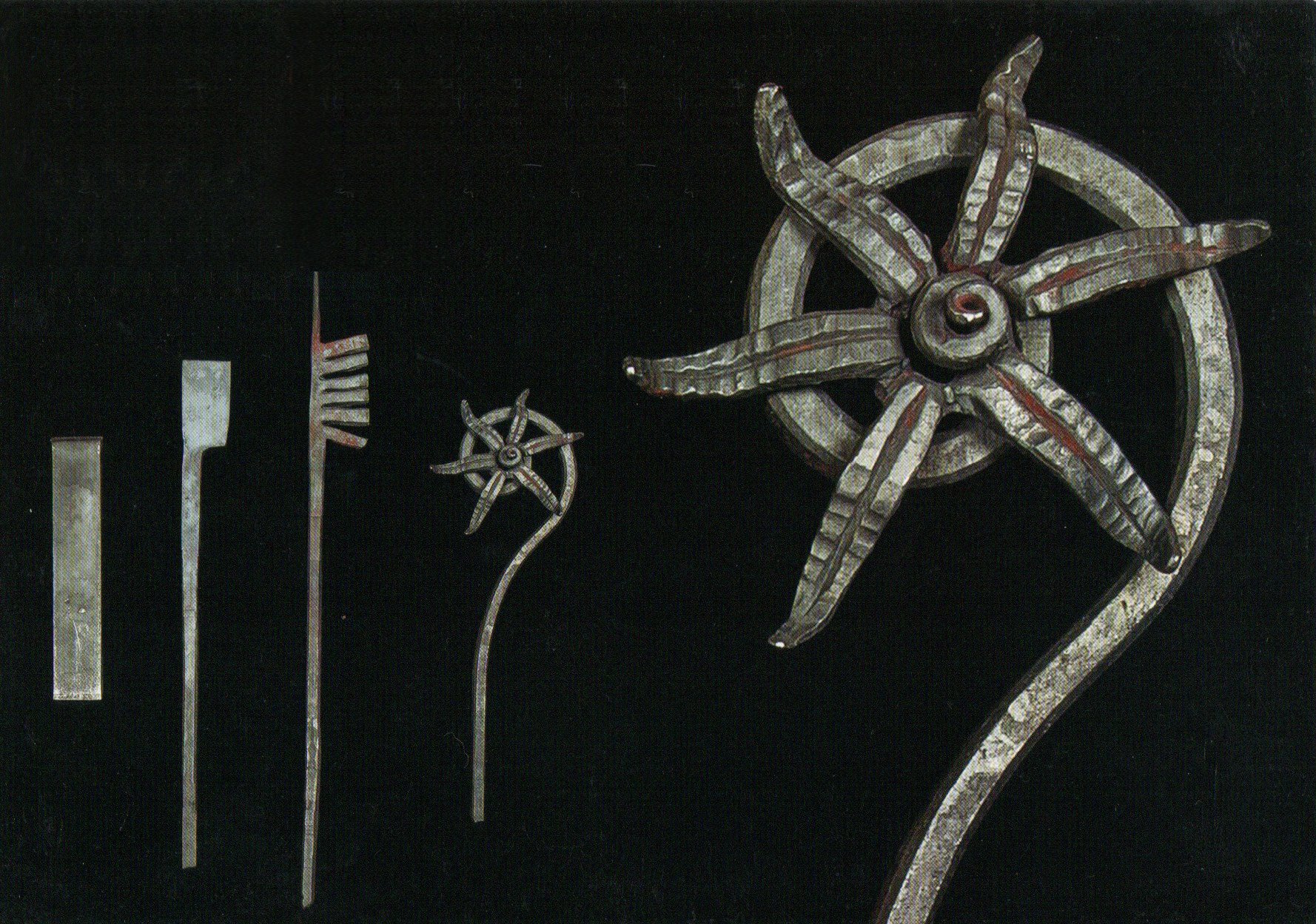
Forging under an electro/pneumatic hammer
What is wrought iron?
Wrought Iron is a fibrous metal consisting of high purity iron, iron silicate, phosphorus, and small amounts of other elements. Once semi molten, the mass is drawn from a puddling furnace and the ingots are then repeatedly hammered to the desired refinement, thus “wrought”. That laborious procedure went on for hundreds of years until the late nineteenth century when electricity allowed for the development of methods to combine iron, carbon, and alloy metals into a product called steel. Faster, easier, cheaper, it was the death blow to wrought iron manufacturing and today wrought iron is found mostly as scrap. There is still one firm in England that re-works salvaged wrought iron for restoration projects, but almost all smiths now use some kind of steel for their forgings.
What is wrought ironwork?
The word “wrought” means to work, to fashion, to beat into shape with a hammer, to actually change the shape of the metal. “Forging” is synonymous to this term. Iron and steel must be brought to a high heat in a forge so it is malleable enough to manipulate with a hammer or press. Wrought ironwork is created only through this process.
One who hammers hot iron, who forges hot iron is called a blacksmith. A blacksmith who makes and fits horseshoes is called a farrier. Blacksmiths may specialize in industrial forgings, tool making, historical restorations, architectural ornament, furniture, lighting, sculpture, or any combination of these.
As a modern colloquialism, wrought ironwork refers to any decorative metalwork regardless of its origin or substance. Actually, we find most of todays “wrought ironwork” is neither wrought or wrought iron, but an imitation of the true meaning. Blacksmithing is centuries old, it is the quintessential form, the one from which all others have originated.


